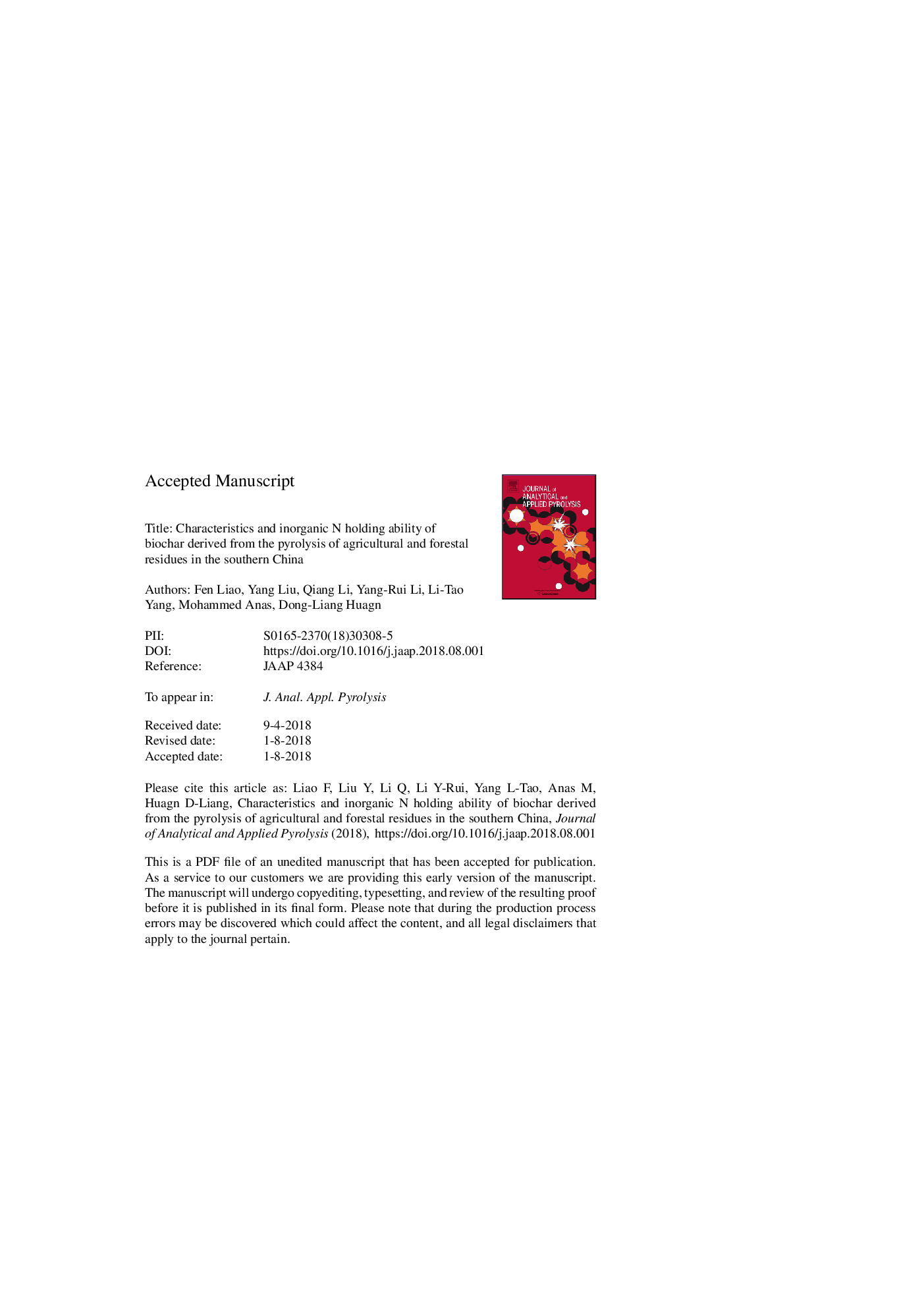| Article ID | Journal | Published Year | Pages | File Type |
|---|---|---|---|---|
| 8954878 | Journal of Analytical and Applied Pyrolysis | 2018 | 24 Pages |
Abstract
Biochar not only provides an important way to utilize agricultural and forestry waste, but also plays an important role in soil improvement and soil carbon sequestration. This study mainly investigated the effect of pyrolysis temperatures(300, 500 and 650â°C) and feedstock types including Banana Leaf (BL), Banana Stalk (BS), Banana Pseudo stem (BP), Sugarcane Leaf (SL), Sugarcane Stalk (SS), Cassava Stem (CS), Mulberry Stalk (MS), and Eucalyptus Branches (EB) on the biochar properties an its inorganic N holding ability. The results showed that the physical properties of biochar were more affected by agricultural and forestal residues types e.g.; herbaceous feedstock materials resulted in lower surface area (2-70 m2/g) while woody materials obtained relatively higher surface area (200-380âm2/g). However, the chemical properties of biochar were affected by pyrolysis temperature, as results indicated that BL biochar obtained pH 10.0 at 650â°C, while 8.45 at 300â°C, BS got highest CEC value 13.79âcmol kgâ1 at 650â°C, while 6.83âcmol kgâ1at 300â°C. NH4+-N sorption amount was ranging from 609.59 to 2040.40âmg/kg by different biochars, BS biochar adsorbed the highest amount of NH4+-N (1668.11 to 2040.4âmg/kg) among all the feedstock materials. Biochar derived from herbaceous biomass had relatively lower yield and C content as compared with that of wooden biomass. However, herbaceous biochars showed relatively better chemical properties than that of wooden biochars. The inorganic nitrogen holding ability of biochar was significantly affected by feedstock resources.
Related Topics
Physical Sciences and Engineering
Chemistry
Analytical Chemistry
Authors
Fen Liao, Liu Yang, Qiang Li, Yang-Rui Li, Li-Tao Yang, Mohammed Anas, Dong-Liang Huang,
